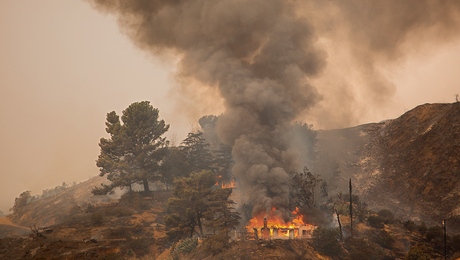I live in pei canada,where it’s cold 5 months of the year. any thoughts on insulation and using a vapor barrier in a basement?
Discussion Forum
Discussion Forum
Up Next
Video Shorts
Featured Story

These defensive details give homes a better chances of surviving wildfires.
Highlights
Fine Homebuilding Magazine
- Home Group
- Antique Trader
- Arts & Crafts Homes
- Bank Note Reporter
- Cabin Life
- Cuisine at Home
- Fine Gardening
- Fine Woodworking
- Green Building Advisor
- Garden Gate
- Horticulture
- Keep Craft Alive
- Log Home Living
- Military Trader/Vehicles
- Numismatic News
- Numismaster
- Old Cars Weekly
- Old House Journal
- Period Homes
- Popular Woodworking
- Script
- ShopNotes
- Sports Collectors Digest
- Threads
- Timber Home Living
- Traditional Building
- Woodsmith
- World Coin News
- Writer's Digest


















Replies
There are a lot of opinions on how to insulate a basement, though the concensus seems to be closer and closer to this:
1) Make sure all your water problems are adequately addressed first.
2) Use EPS or XPS from floor to ceiling, fully sealed/taped.
3) Don't use any other vapor barrier.
The concept is that the EPS/XPS acts as a vapor retarder. It should prevent summer condensation, yet breaths 'enough' to eventually let any trapped condensation dry to the inside.
Alas, at least around here, this concensus goes against building codes. Around here, they ask that you use a full vapor barrier from ceiling to floor. And this is in 100 year old houses that no amount of landscaping can make fully dry. Needless to say, I smell a lot of musty finished basements around here.
Whichever way you decide to do it, because you will no doubt get conflicting ideas on this one, don't use fiberglass batts without some type of vapor barrier between it and the foundation. Rigid foam (XPS) is the best solution. Again, there are many options this way also.
I have done it several different ways. I like a 2x4 studded wall out 2" from the foundation with 1" XPS nailed on the backside of the studwall. This is done while laying on the floor, before tipping up the wall. This gives you a 1" airspace between foundation and the foamed wall. Any moisture (vapor) in the foundation is still able to dry with that airspace. I then install R13 friction fit batts in the stud bays. NO VAPOR BARRIER on the inside of the studwall.
No Vapor Barrier on the interior goes against "accepted practice" but makes sense when one thinks about it. Walls (including foundation walls) must be able to dry out, so moisture must be able to escape in atleast one direction. Given that the surrounding soil is typically moist, wall moisture cannot escape in that direction.
The principles are explained well by Joseph Lstiburek (Building Science Corp.) in his book "Builder's Guide to Cold Climates". Isn't he Canadian?
Randy